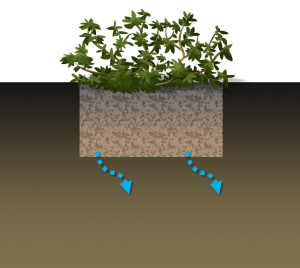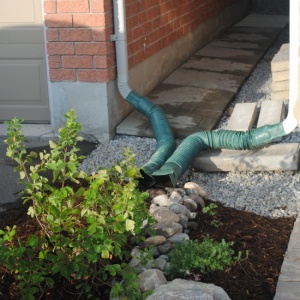Difference between revisions of "Rain gardens"
Jump to navigation
Jump to search
Jenny Hill (talk | contribs) |
Jenny Hill (talk | contribs) |
||
| Line 2: | Line 2: | ||
For more highly engineered systems, see [[Bioretention cells]]. <br> | For more highly engineered systems, see [[Bioretention cells]]. <br> | ||
[[File:Rain Garden Schematic.png|thumb|Schematic illustrating the components of a rain garden.]] | [[File:Rain Garden Schematic.png|thumb|Schematic illustrating the components of a rain garden.]] | ||
| − | [[ | + | [[File:Wheelwright Aug 15 2012 (14) 550x550.jpg|thumb|Disconnected downspout routing water into a rain garden.]] |
{{TOClimit|2}} | {{TOClimit|2}} | ||
Revision as of 23:37, 4 September 2017
This article is about planted installations designed to capture surface runoff in an amended soil.
For more highly engineered systems, see Bioretention cells.
Overview[edit]
Rain gardens capture roof, lawn and driveway runoff from low to medium density residential lots. These can be simple gardens constructed by the homeowner as a retrofit, or they can be professionally designed into a residential development.
Rain gardens are ideal for:
- Capturing the flow from disconnected downspouts
- Community design/build projects for raising awareness about stormwater capture and functional landscapes
The fundamental components of a rain garden are:
- An amended soil mix
- Suitable planting
Additional components may include:
- A splash pad of rocks to prevent the downspout flow from eroding the soil
- An overflow channel to another are of garden

